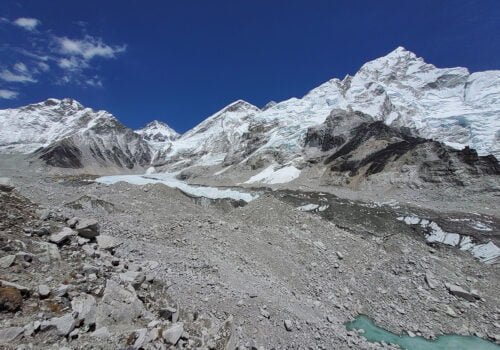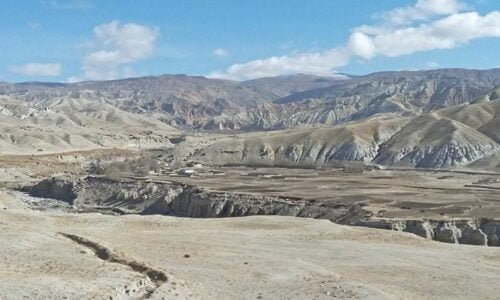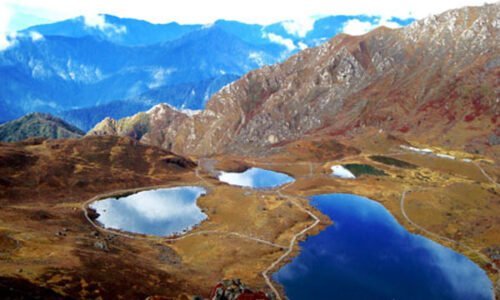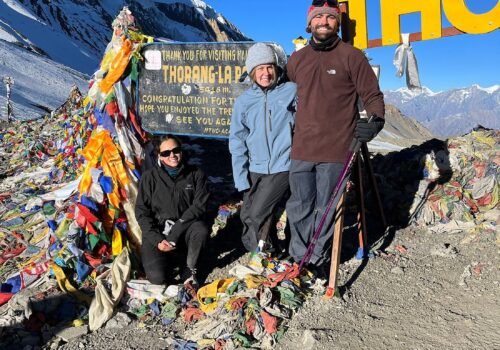Trekking Grades Gears and Accommodation in the Himalayas
8 Apr 2022 6 min to read
Blog-Trekking Grades Gears and Accommodation in the Himalayas. Trekking is a multi-day outdoor activity that involves walking. It is a type of strolling that is done with the intent of exploring and enjoying the scenery. Trekking is more difficult than hiking since it puts one’s aptitude, endurance, and mental and psychological capability to the test. Trekking can be done in a variety of ways, and trekking culture differs greatly from country to country. It usually takes place on paths in relatively undeveloped wilderness areas.
Due to the pleasure of being in the home of the Himalayas, trekking is quite popular among national and international tourists in Nepal. Most of the well-known trekking destinations provide an unforgettable Himalayan experience. The majority of individuals wish to trek in the area’s mountainous areas.
Trekking in Nepal’s most popular pastime. People of all ages and capacities can attempt a trip in the country thanks to the wide range of possibilities. You could spend a year organizing an expedition to remote and dangerous locations that few would dare to visit, or you could arrive in Kathmandu with no preparations and be on the trail in a matter of days.
Types of difficulty grades of trekking
Trekking Grades Gears and Accommodation in the Himalayas should be carefully examined and planned. The term “grading” is used to describe how challenging trekking trails are. Based on complexity and geography, trekking grade we divide trekking into four categories i.e. Easy, Moderate, Difficult, and Strenuous. Briefly explaining, the easy trek does not require great physical fitness or previous experience. Moderate treks demand some previous experience, but even those with little experience or fitness can manage them comfortably and safely. Difficult and strenuous treks should only be attempted by people who have prior experience and are physically fit.
Easy
Easy graded trekking can be chosen by anyone who wants to go on a walk and have a good time in the mountainous region. Trekkers are not required to have any previous experience in order to be compatible for this grade of trekking. Since there is no technicality and the paths along the trail and ridges are well maintained, people with low physical fitness can easily opt for this path. This type of trek usually lasts for about 2-5 days with 4-5 hrs trekking per day. Some examples of easy graded trekking in Nepal are Ghorepani- Poon hill trek, Shivapuri trek, Nagarkot Dhulikhel trek.
Moderate
Similar to the easy graded trekking, the moderate graded trekking also has no technicality. But as the landscape is steep and hilly, with moderately difficult pathways, previous experience is preferable. Since the trek lasts up to 10-12 days with 6-8 hours of daily walking, the trekkers got to have a medium level of physical fitness. Some of the examples of such trails in Nepal are Annapurna base camp trek, Gokyo lake trek, Langtang region trek.
Difficult
Contrary to the easy and moderate grade, this grade is significantly challenging and tough so trekkers having prior experience in trekking, above-average physical fitness and a positive attitude are preferable for this type of trekking. Since this type of trekking is usually done in the high-altitude areas (up to 5500 m), one must be prepared for the altitude. The trek is slightly technical and you have to use fixed ropes, crampons, and one ice ax. The trekking lasts up to 12-16 days with 6-8 hours of walking per day. Some examples of difficult grade trekking in Nepal are Annapurna Circuit, Three Pass, Chola pass, Kanchenjunga Base Camp, Manaslu Circuit, and Makalu Base Camp.
Strenuous
Trekkers with a high level of physical fitness searching for a physically and technically challenging adventure can go for strenuous graded trekking. This type of trekking includes rough paths, steep mountainous terrain, high passes, glacier and snow crossings. There’s also a stronger sense of remoteness, loneliness, and a lack of backup. This trekking usually lasts for 16+ days with 6-8 hours of walking per day. This type of trekking can be technical so we should use fixed ropes, crampons, and ice axes. Some examples of strenuous trekking in Nepal are Dhaulagiri Circuit, Three Pass, Great Himalayan Trail, Amphu Lapcha Pass, and Sherpani Col Pass.
General essential Gears for Trekking
In the Himalayas, besides trekking grades and accommodation, trekking gears are very essential. So, choose wisely. Below is the list of general essential gears for trekking:
- Hiking footwear that is light and comfortable is ideal. Make sure they’re comfy and that you’ve worn them before you start your trekking journey. Trail running shoes, which are lighter, will also work.
- Shorts
- Trekking pants
- Lightweight, quick-drying T-shirts
- Long-sleeved shirt
- Fleece
- Rain jacket
- Down jacket
- Socks
- A light backpack with a good waist and chest belt should suffice.(e.g. 35 liters capacity)
- Sleeping bag
- Bring enough money to last the duration of your journey. There are extremely few ATMs once you start trekking.
- 1-liter bottle. In tea houses along the journey, you can refill or purchase fresh bottles.
- Water purifiers
- Sunscreen
- Sunglasses
- Hat
Other trekking accessories
- Snow glasses and sunglasses
- Trekking Sticks.
- Duffle bag or kit bag to carry to gear while trekking.
- 2-4 plastic bags 2-4 large plastic bags to separate clean clothes from dirty ones. 6-10 smaller plastic bags to dispose of garbage.
- Daypack bag to carry your personal requirements.
- Toilet articles and towels, Toilet paper
- Umbrella (optional)
- Headlamp, Torch, Candles
- Matches / Lighters
- Binocular, Camera, trekking map and compass, pillow, knife, passport photograph, reading materials, pencil, rubber, pen and notebook, lip guard
- Toilet papers.
Accommodation in the mountain regions
Tea houses provide lodging. The rooms are clean and practical enough for a night’s stay, even if they aren’t extravagant. Tea houses may be multi-story concrete constructions with private rooms and associated western-style bathrooms at lower altitudes. The more you trek up, the more primitive the lodgings become. A ceiling lamp, a table, and two wooden beds (each with a cushion and blanket) are standard in every room. Although blankets are provided throughout your stay, they may not be sufficient to combat the severe cold of the Himalayas (depending on the season/weather); therefore, packing a thick sleeping bag is essential.





